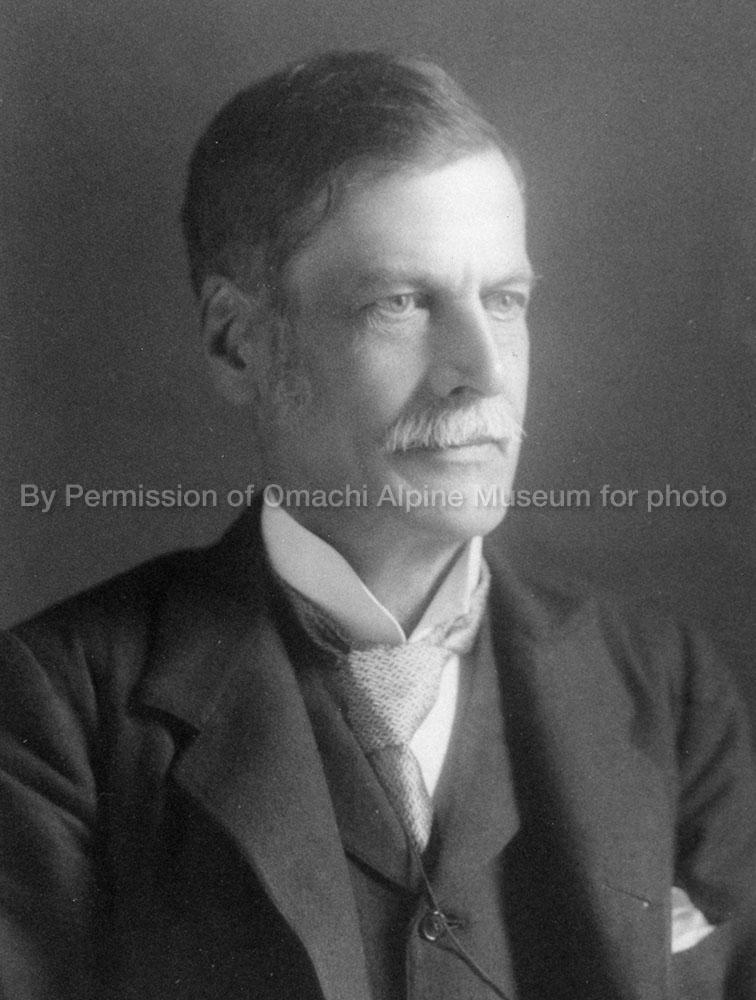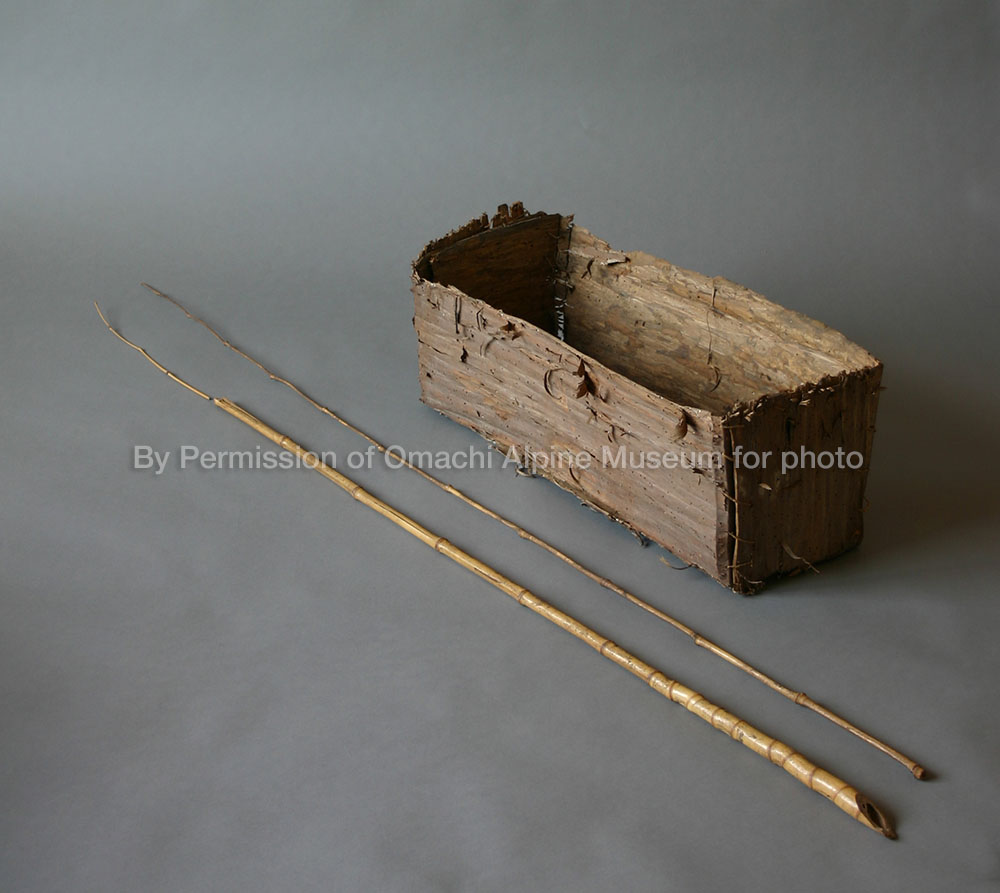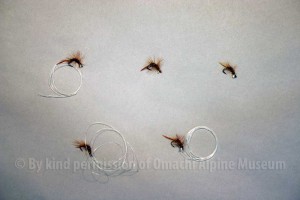
Tenkara is prehistoric. I do not mean that it is primitive or unskilful. Exactly the opposite in fact. The problem is, the fly fishing methods of remote mountain areas would have been invented by people who could neither read nor write. No writing, no history…
The astonishing similarity of tenkara techniques to all of the other original forms of fly fishing around the globe shows how perfect this solution is to catching trout from rivers. This comparison even holds true as far back as the description of Macedonian fly fishing in 200 AD by Claudius Aelianus.
As well as today’s tenkara practitioners in Japan, there are examples of ancient and sophisticated fly fishing methods that are still practiced in Serbia, Italy (notably in Valsesia), Bosnia, Spain and probably many more. The similarities are astonishing. These methods all share the common factor of originally using horse-hair casting line and long, supple rods. Just read the quote from Serbian Dr. Goran Grubic (cited in The American Fly Fisher, Journal of the American Museum of Fly Fishing, Vol. 27, Issue 1, 2001) below describing fly fishing practiced in the “Old Mountain” area of Serbia in the heart of the Balkan peninsula:
“Bodies of flies are made from ordinary sewing thread and wool. They fish both upstream or downstream as their position and the water dictates….Mostly they cast slightly upstream and drift their flies into a likely place (a pocket or run). Sometimes they even dap flies on the surface (and this is the closest they get to the dry fly)…They cast very often and very precisely. Average drift of their flies is maybe a yard or two. In this fast water, the flies never have chance to sink deeply. So they usually see the fish attacking the fly in the clear water. Their line is always stretched tight so they also feel the fish as it hits. When a fish hits, they strike in the wrist”
Dr. Grubic was talking about Serbia – but that is as perfect a description of traditional Japanese tenkara as I have ever seen or heard. The problem is, even when people did start writing (from the late 19th century onwards) about what subsequently became known as “tenkara”, it is from an unavoidably narrow perspective. There are discussions over whether George Elliot Gregory or perhaps Ernest Mason Satow was the first person to record these methods. This British pair would certainly have frequented the same meetings of the Asiatic Society of Japan (thanks to Kevin Kelleher for his insights here)…
But here is the thing – you can tie yourself in knots trying to come up with some kind of definitive history when it is based on so few and such scant accounts. There is just too much scope for observation bias (and it is too tempting to create a single narrative out of something that is far too varied and unconnected to fit into a nice, tidy linear story). In the end, it is all just story telling.

This is not to say that there are not fascinating historic stories! Very much the opposite in fact. It has been our great good fortune to be allowed to use photographs of part of the amazing collection of real, traditional tenkara tackle from the Omachi Alpine museum. Not only that, but the tackle belonged to the actual guide who was responsible for accompanying Ernest Mason Satow on his mountain expeditions when he was the British diplomat in Japan in the late 1800s. The guide’s name was Shinaemon Toyama and quite a lot is known about him, his clothing and even his rod, flies and casting line (check out the pictures on this page of his equipment).
There is also the amazing project of Yoshikazu Fujioka whose passion it has been to find and document examples of kebari (flies) from a multitude of mountain regions in Japan. You can check out his collection of flies that he has photographed and described on his site “My Best Streams”. BUT – do not be tempted to assume that each pattern is the only fly that would be used in each of these regions! Again, it is so tempting to assign structure and formality to tenkara in this way – but this is not what Fujioka-san is saying. Neither is it supported when you visit those areas, since there are always multiple fly patterns will have been fished by various anglers in each area. As Go Ishii says in our Volume 2 DVD interview “Tenkara was not as unified as you people think!”.
The only way to look sensibly at tenkara’s history is to marvel at and recount the interesting stories that we know as and when we discover them. However, I do not think that anyone (even in Japan) is in a position to write a truly representative history of tenkara. We must resist the temptation to weave our own narratives around the different findings. However, we would like to share some of the stand-out features of what has been reported about tenkara through history.
First of all – there are many, many stories of how “tenkara” came to be used as the word that described this fixed-line method of fly fishing in Japan. It is really a very recent term – and in fact you only tend to see it written in the phonetic alphabets of Japanese language (hiragana and katakana). Early magazine articles were about as likely to spell it in hiragana characters (which are used to sound-out Japanese words) as they were to use katakana (which are used to sound out foreign “loan-words” and also commonly used for animal and plant names that can have difficult to remember “kanji” characters). This shows that even in Japan the origin of the word was not a clear cut matter.
The most compelling case for where the name originated and began to proliferate was given to me by Satoshi Miwa. It goes like this (reproduced verbatim from Miwa-san’s messages to us).
“I am sure that the word “tenkara” is new to Itoshiro area, although it must be true that the kind of fly fishing explained here has been conducted in Itoshiro, as in many other areas in Japan. Indeed, when I started trout fishing more than 30 years ago, the traditional Japanese fly fishing is called “kebari-tsuri”, which literally means fly fishing (kebari means hair-hook and tsuri means fishing), in books or magazine articles. The word “tenkara” was popularized by a fishing writer only recently. For the origin of the word “tenkara”, I once posted the following in the fly fishing forum “smallstreams.com”. Recently, I found an article discussing the origin of the word “tenkara”. Although there are many theories about the origin of the word, I think the argument here is rather convincing.
The word, tenkara, is now widely used to refer to the traditional style of fly fishing in Japan. However, there used to be various different naming for this fishing in different regions. The word tenkara became popular by the essays written by Soseki Yamamoto (a famous fishing writer in Japan) after 1960s. Yamamoto learned tenkara from Hideki Sugimoto, a physician in Nagano prefecture (the central mountain region). Sugimoto says in his letter that there is a word “tenkara-tsuri (tsuri means fishing in Japanese)” in Tohoku region (northern part of Japan), and the word is brought to Nagano by logging workers from Tohoku.” The word first appeared in literature in 1838; there is a record of stream fishing in which a “tenkara-shi (shi means man in Japanese)” caught more than 20 yamame or ugui (a cyprinid fish) in Akita prefecture (Tohoku region). In those areas, butterfly or moth used to be called either tegara, tenkara, tengura, tenkarako, or tenkako. The other flying insects might have also been called by these words. ”Thus, “tenkara-tsuri” is almost a direct word-by-word translation of “fly fishing”.
Satoshi Miwa
Miwa-san mentions Yamamoto Soseki – and he is credited with a significant contribution to really bringing “tenkara” to the attention of a wider audience in Japan from the 1960s onwards. This is significant because modern tenkara is a hobby or leisure pursuit – but for most of its history it has been a survival method or at the very least a form of “work”. This professional aspect is tied closely to the Shokuryoshi tradition. That tradition, in itself, is also closely allied to the Matagi culture of Japanese mountains. Many refer to Soseki-san as the father of modern tenkara. The first recognisable generation or cohort of of modern-era “tenkara for sport include famous people like Masami Sakakibara, Dr. Hisao Ishigaki, Yuzo Sebata and more. This means that, at the time of writing, it is likely to be the pupils of these various “first generation after Soseki” practitioners who will become the second generation of modern-era tenkara anglers. This is, indeed, exciting times to be involved with tenkara.
A fascinating observation that we always like to include in discussions of historic tenkara is the case of Bunpei Sonehara – possibly the last professional tenkara angler (or Shokuryoshi) in the Kurobe region of Japan. Sonehara-san (1915-2000) died at the turn of the millennium and, as a result, witnessed the transformation of tenkara from a practice or craft of necessity into a leisure activity. He actually straddled this boundary and, again, we are extremely fortunate to have photographs of his actual flies (still tied to tippet) to show you here.

Finally, for this summary piece, we would like to challenge some common views on tenkara in Japan as historic/codified activity versus what tenkara means in the modern, global arena. Because there are many accounts of a wide variety of traditional Japanese fly fishing techniques across Japan – including Soseki-san’s descriptions of multi-fly “dropper” rigs and many more – it is clear that the historic methods of what we now call “tenkara” (or the strands of activities that eventually evolved into modern tenkara if you prefer) are a pretty broad church. Not only that, but there are really strictly defined codes that different, major, modern tenkara practitioners both teach and practice. In other words, it is a living and developing scene with regional and personal “flavours”. Some teachers will exclude the activities of other teachers from what they accept as “tenkara”. It is a well-known saying that if you ask ten people in Japan what tenkara is, you will get ten different answers.
But here is the rub, just because there are variations within the overall “family” of tenkara techniques in Japan – it does not mean that any and all variations that people invent are either equally effective or even most closely related to “tenkara” compared to other fly fishing traditions or “schools”. It is a bit like any team sport coach will have a “play book” for pre-rehearsed set-piece attacks. You would not look in any one of those books and expect to just see a single play (here is the one, individual best play folks!). There are different set-pieces for different scenarios.
Not only that, the plays that actually make it into the book are PROVEN ones that have been tested and retained only when they actually work. It is very different from just adding another play randomly to the end of that book and expecting it to succeed just as well. This is especially true if you pick a play at random from one sport (say rugby) and insert it into the book for another (say basketball). True, there may be insights to be gained and used, but there is a lengthy translation and testing period to undergo first…
Where are we going with this? Well, it is fairly common to see the view in the west that “There are lots of ways that people practice tenkara in Japan – so whatever method you invent can be called tenkara”. Whilst this is certainly true in a literal sense – you risk missing out on all the benefits provided by extensive testing and refinement that has taken place in order to produce those Japanese variations that were good enough to survive. You don’t see the variants that have been tried and rejected over time…those tactics didn’t make it – so they are simply not there to be seen.
It is also a fact that any newly-invented tactic could be a lot more similar to fly fishing schools from parts of the world other than Japan. We have absolutely no problem with people using whatever techniques are legal and enjoyable. Rather, our word of guidance is that you will probably get the very best of any technique by having an understanding how (and maybe even where) particular developments actually came into being.
So here is our take home message in two parts:
1.) Tenkara was not a planned and neatly-developed technique with
clear parameters – the various methods of traditional fly fishing just
developed according to need (so don’t try too hard to fit things into
narratives or formal classifications).
2.) Despite this, the whole family of modern tenkara techniques still developed within the characteristic national culture of Japan and, so, the central principles tend to have a distinctive flavour that is identifiably Japanese (even though there are striking similarities to other traditional forms of fly fishing around the globe).
Same-same; but different…
